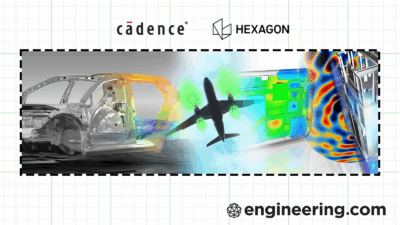By leveraging Siemens Solid Edge, Metal Craft Tamura has improved efficiency and accuracy in design and production.
Siemens has sponsored this post.
Founded in 2010, Metal Craft Tamura has built a reputation for precision sheet metal fabrication, producing a wide range of components, everything from large railway vehicle parts and operator cabins for train track maintenance cars, to small precision components used in semiconductor manufacturing. And when some of your products exceed two meters in size, you need not only advanced technical skills but also exceptional adaptability.

From 2D to 3D: A turning point in manufacturing
In its early years, the company relied solely on 2D CAD. However, misinterpretation of customer drawings and the subsequent rework on the shop floor became recurring issues, especially with Metal Craft Tamura’s large and complex assemblies, such as railway operator cabins which can contain more than 200 individual parts. Visualizing the final product from 2D drawings often proved difficult, and discrepancies in interpretation between workers often led to costly mistakes.
To address these challenges, Metal Craft Tamura adopted Siemens Solid Edge, part of the Designcenter suite, into their workflow and began leveraging 3D assembly models. By reconstructing the final product in 3D from the customer-supplied 2D DXF drawings, the team dramatically improved both accuracy and efficiency.
“Using Solid Edge’s Create 3D capability, we build 3D models from the 2D DXF files provided by our customers. By converting our designs into 3D, we’re able to get a much clearer understanding of the product’s actual shape,” explains Hideki Kon, Section Manager at Metal Craft Tamura. “In some cases, we’ve even spotted errors in the original drawings that would have gone unnoticed until assembly. Catching these issues early has saved us from costly rework and delays. It’s been a really effective way to improve accuracy and efficiency.”

Cutting work time in half with 3D models
The shift to 3D modeling has had a profound impact on the design and production of many of Metal Craft Tamura’s products. Weld marking accuracy has improved, significantly reducing on-site corrections. Overall work time has been cut by nearly 50%. Fixture design has also evolved and now incorporates ergonomic considerations thanks to 3D visualization. By sharing models with shop floor workers, the team can collaboratively review designs, ensuring that fixtures accommodate torch movement and operator workflows during the welding process.
“Being able to edit part geometry parametrically has helped us reduce the effort required to produce similar components. I also find it useful that Solid Edge allows us to make changes to multiple parts within an assembly at the same time. This is a practical feature that supports our day-to-day work,” says Kon. “By switching to 3D for our production processes, we’ve been able to cut total man-hours in half compared to 2D.”
Bridging the gap between shop floor and customer
The company has installed PCs directly on the shop floor, making it easy for workers to freely manipulate and inspect 3D models at any time. This boosts decision-making and speeds up operations because workers don’t need to leave the shop floor for the office each time a change is needed.
3D models are also used in customer meetings, shown through laptop presentations or with 3D PDFs, and clear, detailed models make communication more intuitive and strengthen trust between Metal Craft Tamura and its customers.

Embracing 3D scanning for reverse engineering
Recently, Metal Craft Tamura began using 3D scanners for reverse engineering as the newest addition to their workflow. When tasked with replacing factory pipes or ducts, they scan the environment and import the data directly into Solid Edge assemblies. This enables precise placement and interference-free design, eliminating the need for on-site adjustments. They use the same approach for custom automotive parts, where scanning the actual vehicle ensures the final part is a perfect fit.

Looking ahead: Structural analysis and AI integration
The next frontier for Metal Craft Tamura is in-house structural analysis. Currently outsourced, bringing this capability in-house would allow the company to offer end-to-end design and validation, adding even more value for customers. They also plan to unify their fragmented internal databases — covering drawings, estimates and more — into a centralized system powered by AI.
“3D modeling has brought us remarkable efficiency gains,” says Hiroshi Tamura, President of Metal Craft Tamura. “Moving forward, we’ll continue to stay attuned to rapidly evolving technologies like AI, and explore new business opportunities.”
To learn more, visit Siemens Solid Edge.



